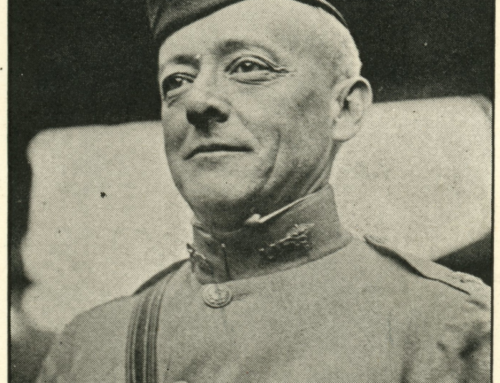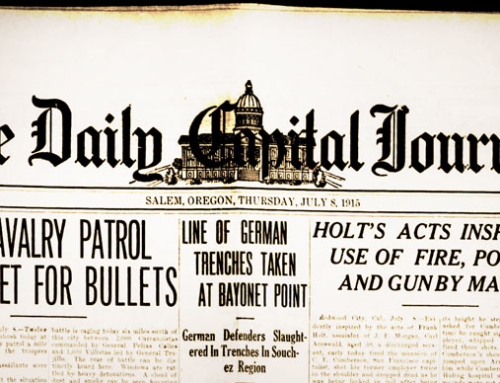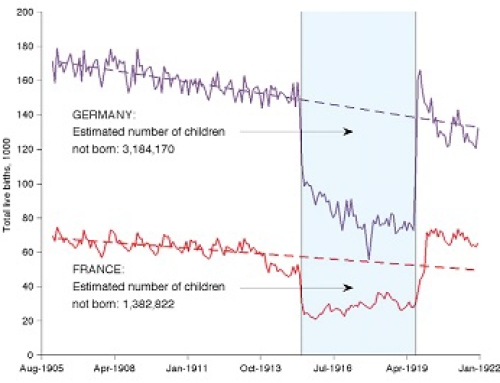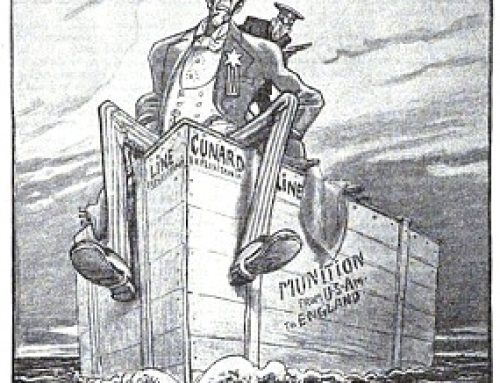By Richard van Pelt, WWI Correspondent
The front page of the Capital Journal had little news of the world except to note that Huerta was still in the capital. During 1914, significant events in the Mexican revolution included:
- Tampico Affair: Rebel forces under Venustiano Carranza were approaching the oil town of Tampico, where there were substantial numbers of U.S. citizens. American companies were heavily invested in the local oil industry. American warships under the command of Rear Admiral Harry T. Mayo were in the area to protect American citizens and property. Americans sailors detained by Huerta soldiers and later released prompted the Navy to demand a formal apology and the American flag raised ashore with a 21 gun salute. The Mexican commander refuses.
- In April, American seamen and marines land at Veracruz. Snipers open fire on Americans, four of whom are killed. Eventually 3,300 sailors and 2,000 marines land. 126 Mexicans and 17 Americans killed. As a result of the intrusion, resentment against Americans grows in Mexico.
- In early June, Battle of Zacatecas becomes one of the bloodiest battles in the Revolution .Pancho Villa’s forces defeat the troops of General Luís Medina Barrón defending the town of Zacatecas. The victory demoralized Huerta’s supporters, leading to his resignation on July 15. After his resignation, Huerta goes into exile in Europe. He eventually returns to the US in an attempt to reenter Mexico. He is placed under house arrest in El Paso till his death in 1916.
Buried on page 5, though, is the following:
AUSTRIA IS AFRAID TO PUSH THE INQUIRY
War Talk Over Assassination of Archduke Francis Ferdinand
Dwindles, Simmers and Dies
AUSTRIA FEARS RUSSIA AND ALSO A REBELLION
Servia Not Strong as a Nation, But Powerful as a People,
Millions of Austrian Subjects Servians
London, July 15. Among diplomats here there has been considerable comment concerning the suddenness with which the Austrian talk of a demand for a Servian explanation of the assassination of Archduke Francis Ferdinand and his wife simmered down to nothing.
There seems to be no question that the plot was hatched in Belgrade, the Servian capital. It was also pretty clear that, though the government as a government probably had nothing to do with it, certain high government officials were involved and there was no doubt at all that the weapons and explosives used by the assassin and the would-be but unsuccessful assassin were from the Servian arsenal.
Taking these things into consideration, it was the general view in the European chancellories that a Servian explanation really was due. The Austrian press and Austrian public men were outspoken enough, too, for several days after the killings, in their declarations that one would be forthcoming or that Servia would suffer for it.
After which all this war talk dwindled off into a little subdued grumbling and then into silence. Servia did not explain, evidently does not intend to explain and has not been asked for an explanation. It simply outfaced its powerful neighbor.
Diplomats say Russia’s friendship for Servia may have had something to do with this. It is quite likely the czar would have interfered if an Austrian invasion of Servia had been undertaken and naturally the Vienna government would think twice about a clash with Russia.
But according to good judges of the situation in southeastern Europe a consideration which probably had a good ideal more weight with Emperor Francis Joseph than fear of Russia was the practical certainty that he would have a rebellion in his own country on his hands the moment he attempted to discipline the Servians.
The latter are not very important as a nation but as a race they form a large part of the population or Austria’s southeastern provinces and the temper they showed following the incident at Sarajevo left no doubt of their bitter hatred for the government they live under.
The truth is, in the view of most European diplomats, that the Austrian government made the best of Archduke Francis Ferdinand’s murder because it was afraid if it resented it, it would precipitate a revolt which might rend the empire to pieces.
Nor are observers of the situation altogether sure that the danger is yet over.
The optimism of the first paragraphs of this article quickly gave way to the dangers noted in the final paragraph. Despite the observation that “all this war talk
In the United States, large gold shipments are moving from America to Europe.
The article speaks of “Austria.”At other times the paper will report of activities in “Austria-Hungary”or the “Dual Monarchy.”Formally, the lands ruled by the Emperor Franz Joseph was known as “The Kingdoms and Lands Represented in the Imperial Council and the Lands of the Hungarian Holy Crown of St. Stephen.”
Hungary was a distinct part of the Dual Monarchy, but shared with Vienna joint ministerial functions of foreign affairs, finance, and war. In 1914 Austria-Hungary included Austria, Hungary, Slovenia, Bosnia and Herzegovina, Croatia, the Czech Republic, Slovakia, large parts of Serbia and Romania, and smaller parts of Italy, Montenegro, Poland and Ukraine.
The article correctly points out that in such diverse empire, there were many minority groups that sought independence or amalgamation with other nations.
Where the article states that “There seems to be no question that the plot [to assassinate the Archduke] was hatched in Belgrade, the Servian capital. It was also pretty clear that, though the government as a government probably had nothing to do with it, [that] certain high government officials were involved and there was no doubt at all that the weapons and explosives used by the assassin and the would-be but unsuccessful assassin were from the Servian arsenal.
We do not know the extent to which the Serbian leadership or monarchy knew of the plot. Elements of the Serbian military and intelligence service were involved with the plot, with the training of the assassins, and with the logistics of the plot.
We cannot look at the workings of the belligerents through the lens of today. Though they had political infrastructures that appear familiar to us, it was not at all the case when examined more closely. Foreign ministries might engage in negotiations and alliances and never tell the prime minister or legislature. Army general staffs would plan for war, the nature and scope of which they kept to themselves. Armies would keep secret their plans from the navies and visa versa. Envoys would engage in discussions that they would withhold from their nominal superiors, the foreign ministers. The German plans for a war with France involved German armies crossing through Belgium, Luxembourg, and the Netherlands, plans which were withheld from the foreign ministry until it was too late to alter the strategy.







Leave A Comment